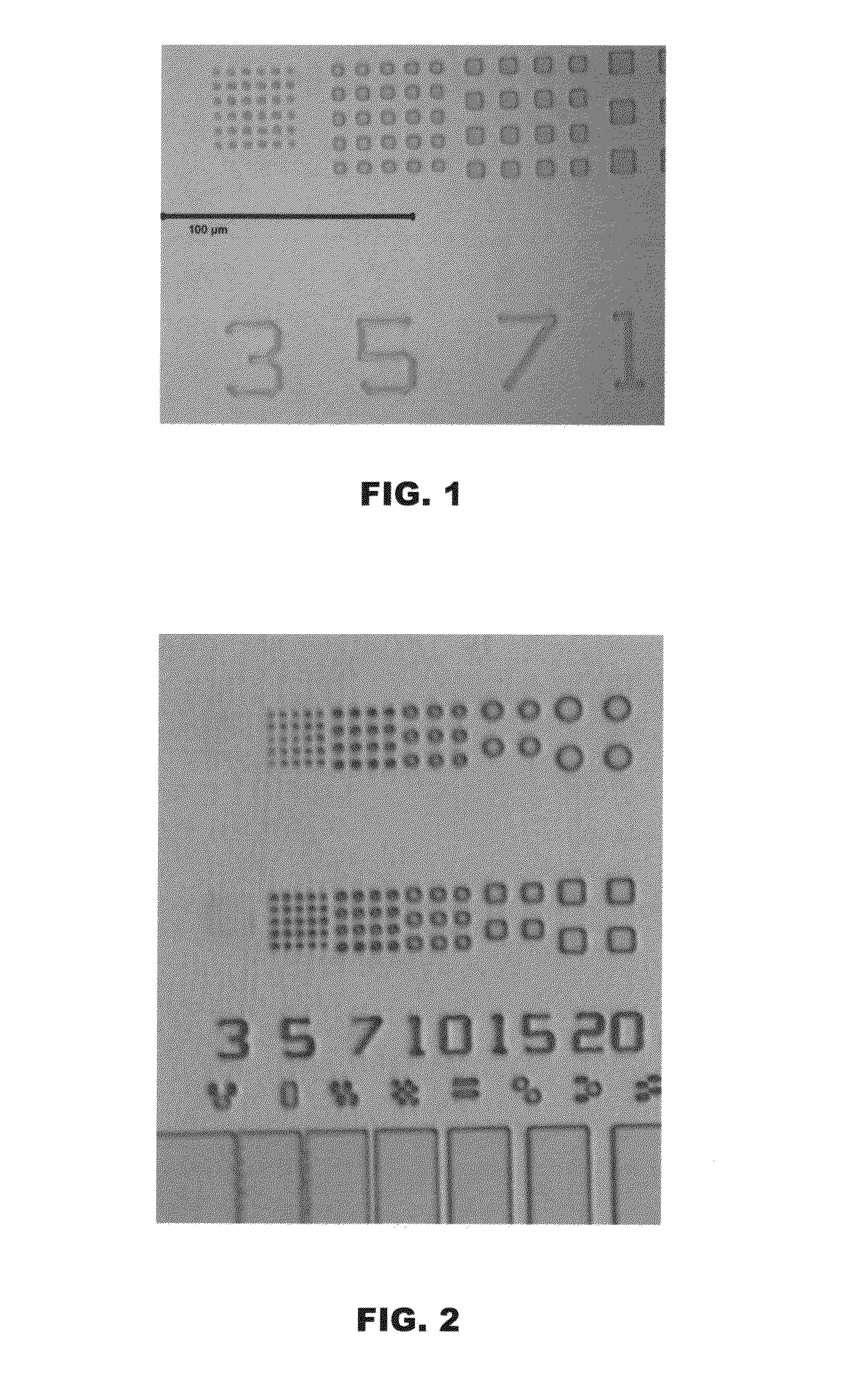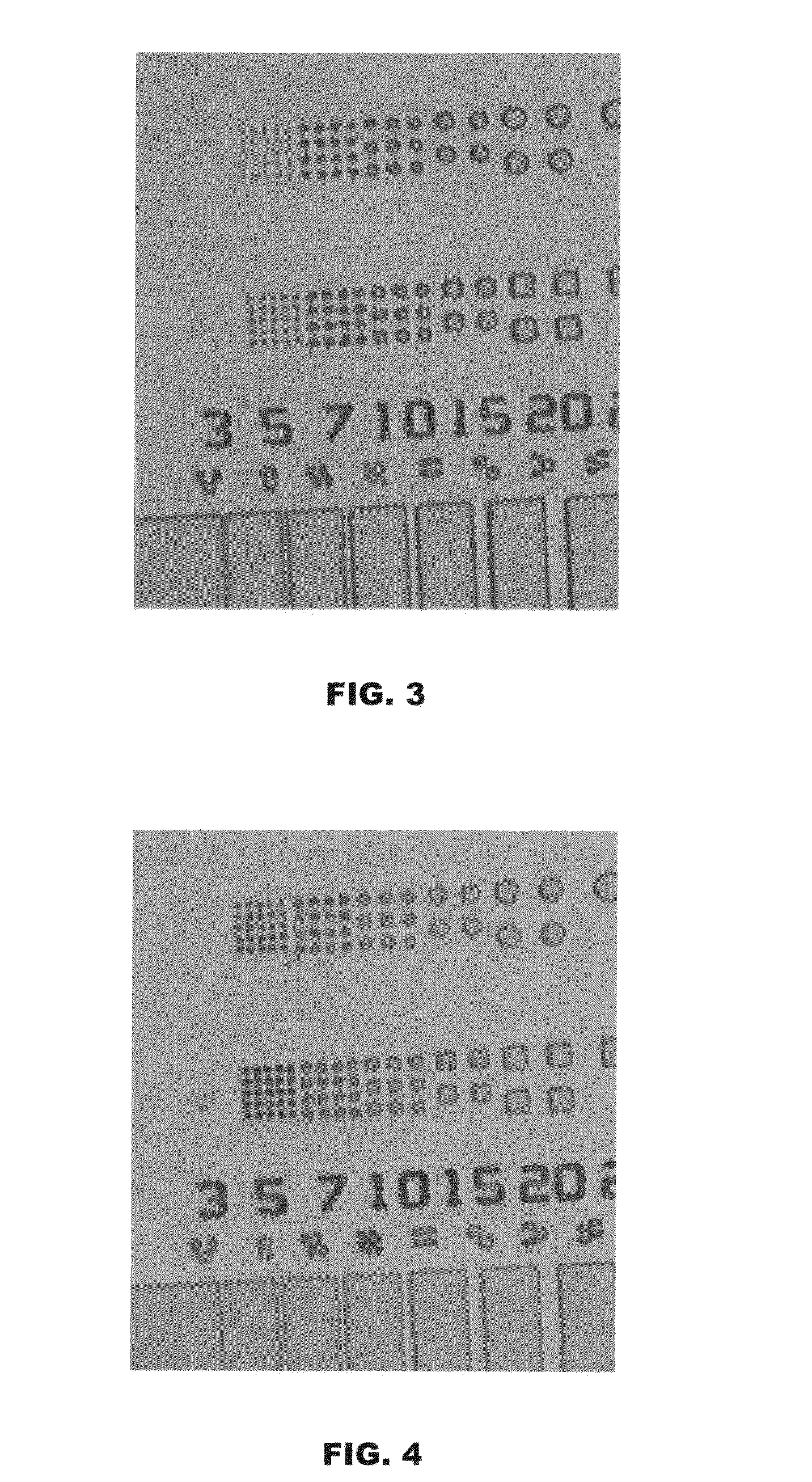Diazirine compounds and compositions derived therefrom
- Summary
- Abstract
- Description
- Claims
- Application Information
AI Technical Summary
Benefits of technology
Problems solved by technology
Method used
Image
Examples
example 1
Propane-1,3-diyl bis(4-(3-(trifluoromethyl)-3H-diazirin-3-yl)benzoate)
[0197]
[0198]All of the procedures described herein were carried out under yellow light conditions. To a 60 mL crimp cap bottle equipped with a stirbar was added 4-[3-(trifluoromethyl)-3H-diazirin-3-yl]benzoic acid (2 g, 8.7 mmol, 2.5 equiv., purchased from TCI America), followed by potassium carbonate (2.4 g, 17.3 mmol, 5 equiv.) and acetone (20 mL). To the stirring slurry was added diiodopropane (1.1 g, 3.5 mmol, 1 equiv.). The reaction mixture was allowed to stir for 20 h.
[0199]The reaction mixture was then filtered through #4 filter paper followed by dilution with EtOAc (20 mL). The resulting solution was washed with water (3×10 mL). The organic layer was concentrated to a very small volume (0.73 g, 42% recovery). LC-MS analysis of the reaction mixture indicated formation of two products: the target compound (M+1−2N2=445) and the mono-iodo byproduct, 3-iodopropyl 4-(3-(trifluoromethyl)-3H-diazirin-3-yl)benzoate...
example 2
3,3′-((oxybis(methylene))bis(4,1-phenylene))bis(3-(trifluoromethyl)-3H-diazirine)
[0200]
[0201]All of the procedures described herein were carried out in the dark. To a 60 mL crimp cap bottle equipped with a magnetic stirbar was added NaH (60% dispersion in mineral oil) (0.204 g, 5.1 mmol, 1.1 eq). The bottle was sealed with a septum cap and a vent needle (20 gauge) was added. THF (7 mL) was syringed into the reactor. The solution of 4-[3-(trifluoromethyl)-3H-diazirin-3-yl]benzyl alcohol (1 g, 4.6 mmol, purchased from TCI America) in THF (3 mL) was added slowly to the reactor by syringe (bubbling was visible). This mixture stirred for 10 min followed by addition of neat 4-[3-(trifluoromethyl)-3H-diazirin-3-yl]benzyl bromide (1.3 g, 4.6 mmol, purchased from TCI America) by syringe. The reaction mixture was allowed to stir at room temperature overnight (20 h).
[0202]Water (10 mL) was then added to the reaction slurry resulting in a biphasic mixture. The organic layer was removed from the...
example 3
Poly(HexNB)
[0204]HexNB (1.6 Kg, 9 moles), cyclohexane (6.2 Kg) and ethyl acetate (3 Kg) were mixed together, nitrogen sparged for 30 minutes and cooled to 20° C. (η6-toluene)Ni(C6F5)2 (12.2 g, 0.025 moles) and toluene (250 g) were added to the monomer mixture. The reactor temperature was increased to 40° C. and the mixture was stirred for 3 hours. Residual catalyst was removed and the polymer was precipitated into isopropanol. After isolating the polymer by filtration, it was dried in a vacuum oven at 80° C. The polymer was characterized by GPC: Mw: 190,000 Mn: 75,000
PUM
| Property | Measurement | Unit |
|---|---|---|
| Temperature | aaaaa | aaaaa |
| Temperature | aaaaa | aaaaa |
| Temperature | aaaaa | aaaaa |
Abstract
Description
Claims
Application Information
 Login to View More
Login to View More - R&D Engineer
- R&D Manager
- IP Professional
- Industry Leading Data Capabilities
- Powerful AI technology
- Patent DNA Extraction
Browse by: Latest US Patents, China's latest patents, Technical Efficacy Thesaurus, Application Domain, Technology Topic, Popular Technical Reports.
© 2024 PatSnap. All rights reserved.Legal|Privacy policy|Modern Slavery Act Transparency Statement|Sitemap|About US| Contact US: help@patsnap.com










